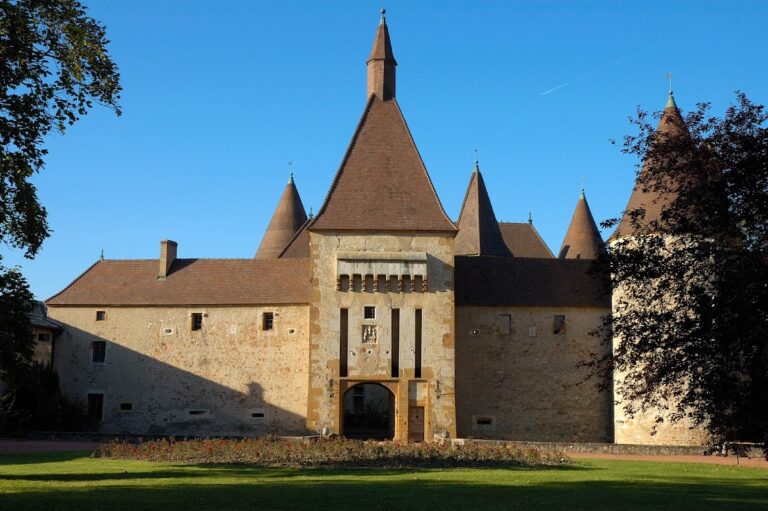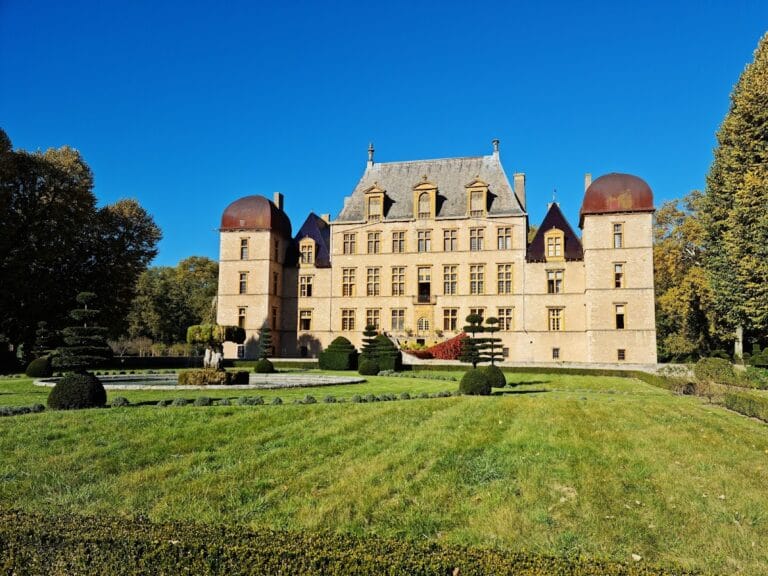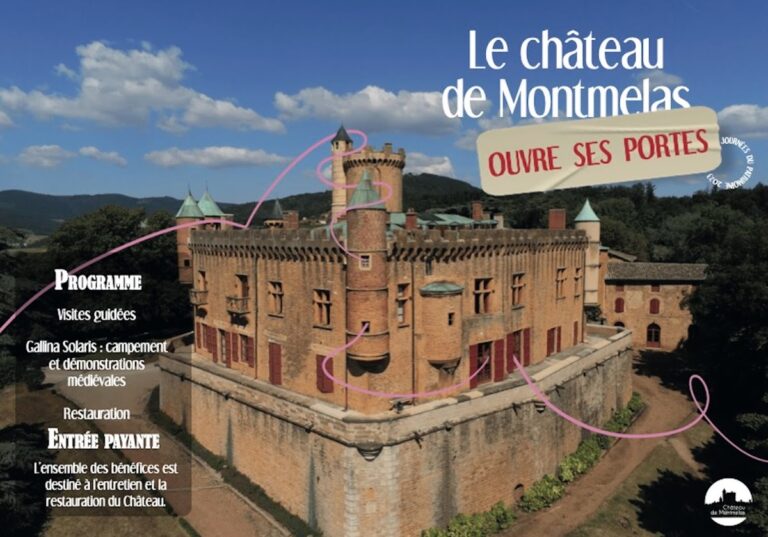Château de Pizay: A Historic Medieval Estate in Belleville-en-Beaujolais
Visitor Information
Google Rating: 4.5
Popularity: Medium
Google Maps: View on Google Maps
Official Website: www.chateau-pizay.com
Country: France
Civilization: Unclassified
Remains: Military
History
The Château de Pizay is located in the municipality of Belleville-en-Beaujolais, France. Its origins trace back to the medieval period when it was established as a fortified residence in the late 14th century by local feudal lords.
The earliest known association with the site dates to at least the late 11th century when the Marchamp family held the estate, represented by Gosmard de Pizay around 1070. This period marked the establishment of the initial fortified structures that would form the core of the château grounds. Ownership passed through family lines and marriage alliances over the centuries, indicating the château’s continuous importance as a noble residence within the region.
In 1420, the château’s possession transferred to the Nanton family through marriage, followed by another matrimonial handover to the Sainte Colombe family in 1570. These family transitions highlight the social networks of landed aristocracy governing the area during the late medieval and early modern periods.
By the early 18th century, the estate shifted from noble lineage to mercantile ownership when François II Sabot, a merchant from Lyon, acquired it in 1722. This change reflects the rising influence of wealthy urban entrepreneurs in rural estates during that era. Subsequently, inheritance saw Jean-Marie Sarrazin take possession in 1831, and later Jean-Marie Berthet purchased the château in 1883.
In 1916, the property was sold to Alfred Pépin de Bonnerive. The château’s continuity as a private estate persisted into the 20th century, including periods surrounding both World Wars. After World War II, ownership continued to evolve until the insurance company Groupama acquired the château in 1981. Since then, it has been adapted for hospitality purposes, yet preserved as a historic site, notably gaining partial heritage protection since 1972, safeguarding key architectural elements.
Remains
The Château de Pizay retains significant medieval fortifications alongside later architectural additions, presenting a layered historical site. Central to its medieval heritage is the Tour Tanay, a square-shaped donjon (a fortified main tower) constructed around 1030. This keep features four corner watch turrets, known as échauguettes, which provided vantage points for surveillance and defense. A circular staircase tower is attached to the structure, offering access between floors. The donjon stands within a broader enclosure dating to approximately 1070, indicating an early form of defensive perimeter around the fortified house.
Adjacent to the medieval elements, the château lies close to a Renaissance residence and a chapel built in the 19th century, illustrating the estate’s architectural evolution across several periods. These buildings reflect changing residential styles and religious practices associated with the site.
The gardens surrounding Château de Pizay were designed in 1692 by André Le Nôtre, the renowned landscape architect behind many French classical gardens. Le Nôtre’s design included 32 yew trees trimmed into topiary shapes arranged in a checkerboard pattern. Presently, eight of these yews remain, pruned flat to create a star-shaped layout resembling a hopscotch outline centered on a basin. The garden includes hornbeam-lined galleries and green cabinets—enclosed garden rooms defined by trimmed hedges—typical features of formal French garden design.
The château estate encompasses 75 hectares of vineyards cultivated with traditional grape varieties such as Gamay noir and Chardonnay. These vineyards supply several distinct appellations: 26 hectares dedicated to Beaujolais red wine, 19 hectares for Morgon, 18 hectares for Brouilly, 7 hectares for Beaujolais white, and 5 hectares for Régnié. This extensive viticultural presence underscores the château’s integration within the wine-producing landscape of the Beaujolais region.










